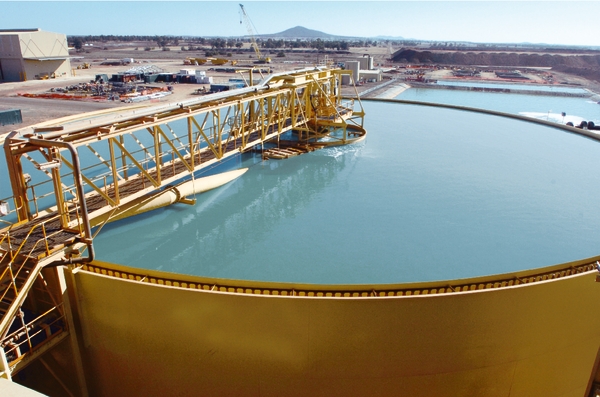If you want to know more information (such as product/process price, etc.), please contact us 24-hour telephone
In the face of rising global demand for copper mine resources, the production efficiency and operating costs of concentrators have become key factors in industry competition. As the core equipment in the solid-liquid separation stage, high-efficiency concentrators are revolutionizing modern copper mining processes with their significant performance advantages. This article will delve into the innovative design and application value of these devices.
(1) Maximum Handling Capacity
High-efficiency concentrators use multi-layer inclined plate assemblies and optimized central feeding designs, increasing their handling capacity to 1.5 to 2 times that of conventional concentrators. For example, a 30-meter diameter device at a Chilean copper mine can process over 8,000 m³ per day, perfectly matching the production capacity of 500,000 tons of copper concentrate per year.
(2) Intelligent Concentration Control
Through ultrasonic concentration monitoring and hydraulic rake control systems, high-efficiency concentrators can stabilize the underflow concentration between 65% and 72%. Compared to traditional equipment, the moisture content of the filter cake is reduced by 8 to 12 percentage points, directly decreasing the workload of subsequent filter presses by 30%.
(3) Dynamic Energy-Saving System
Equipped with variable frequency speed motors and intelligent feeding balance modules, high-efficiency concentrators reduce energy consumption by 40% compared to traditional models. Production data shows that even with a 15% fluctuation in ore density, the unit energy consumption can be maintained at ≤0.3 kW·h/t, an industry-leading level.

(1) Process Optimization and Efficiency Increase
In a Peruvian copper-molybdenum mine project, using a three-stage concentration series process, the water reuse rate was increased from 78% to 92%, saving $1.2 million in water costs annually and extending the tailings pond expansion cycle by more than three years.
(2) Adaptability to Complex Ores
For highly muddy copper ores (with >35% particles less than 0.038 mm), the precise dosing system for high-polymer flocculants increased the settling speed to 9-12 m/h. In the application at a Congolese (DRC) oxidized copper mine, the solid content of the overflow water was stably controlled below 50 ppm.
(3) Full-Process Synergistic Effect
When building a closed-loop system with semi-autogenous grinding (SAG) mills, high-efficiency concentrators can precisely control the grinding concentration within the 75% to 78% process window, increasing the mill processing capacity by 18% and reducing steel consumption by 0.15 kg/t.
(1) Structural Breakthroughs
Hyperbolic Flow Guide Design: Improves the uniformity of pulp flow distribution by 40%.
Modular Cone Segment Combination: Allows for flexible expansion of the settling area based on processing needs.
Nano-Ceramic Coated Rake Arms: Extends wear resistance to 36,000 hours.
(2) Evolution of Intelligent Control Systems
Integrates machine learning algorithms to build dynamic models of pulp characteristics and operating parameters, achieving automatic optimization of flocculant dosage (with an error of ±2%), accident warning response times of less than 15 seconds, and 100% remote diagnostic coverage.
(3) Integration of Green Technologies
Solar-Driven Systems: Replaces 100% of daytime energy consumption with clean energy.
Thermal Energy Recovery Devices: Generates electricity using temperature differences during concentration, saving 120,000 kWh annually.
Environmentally Friendly Flocculation Systems: Develops new drugs with a biodegradation rate of more than 90%.
In the EPCM project at Chile's Escondida copper mine, our company shortened the construction cycle of the concentration system by 45 days through three-dimensional fluid simulation and modular on-site installation. During operation, we provide performance guarantee contracts (ensuring underflow concentration standards ≥98%), dynamic maintenance schemes (predictive replacement warnings for critical components), and digital twin systems (real-time monitoring of over 300 operating devices worldwide).